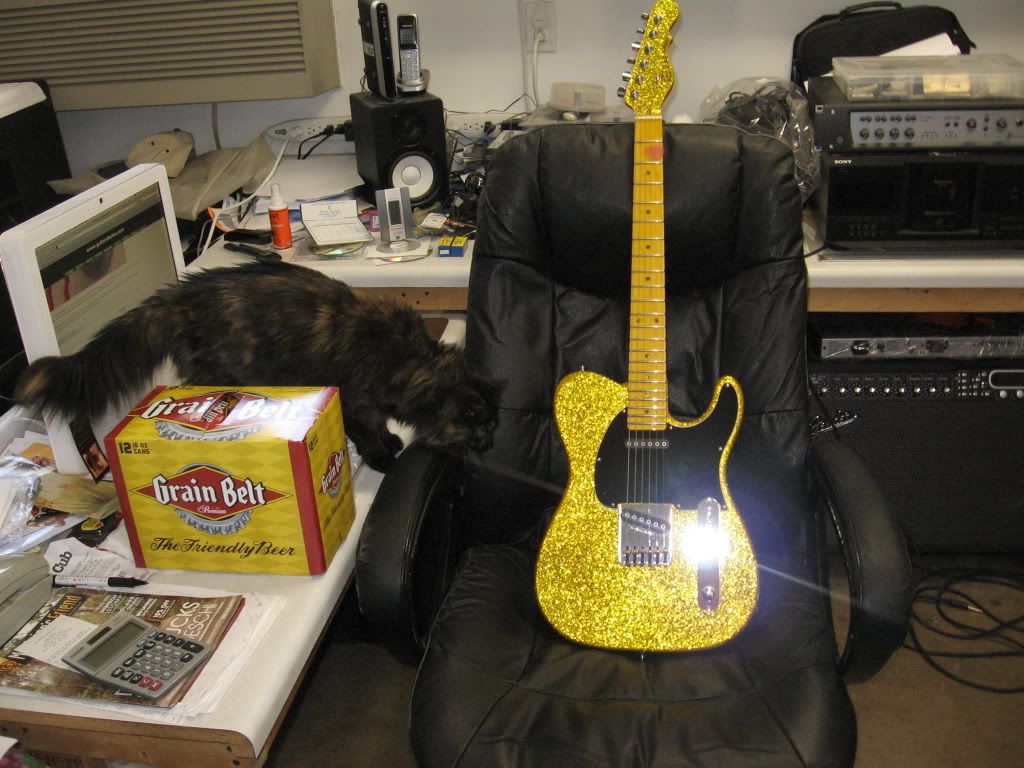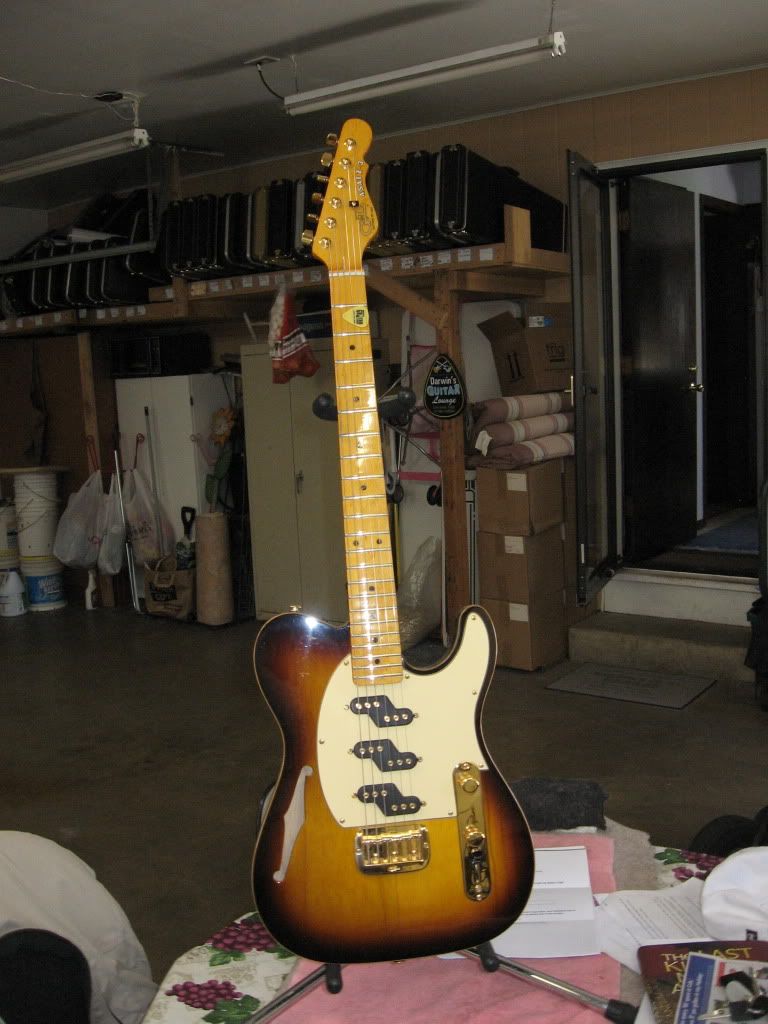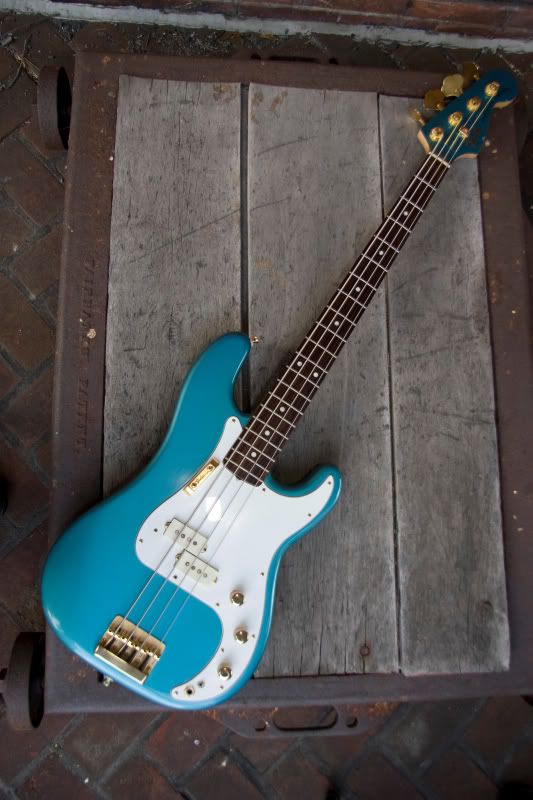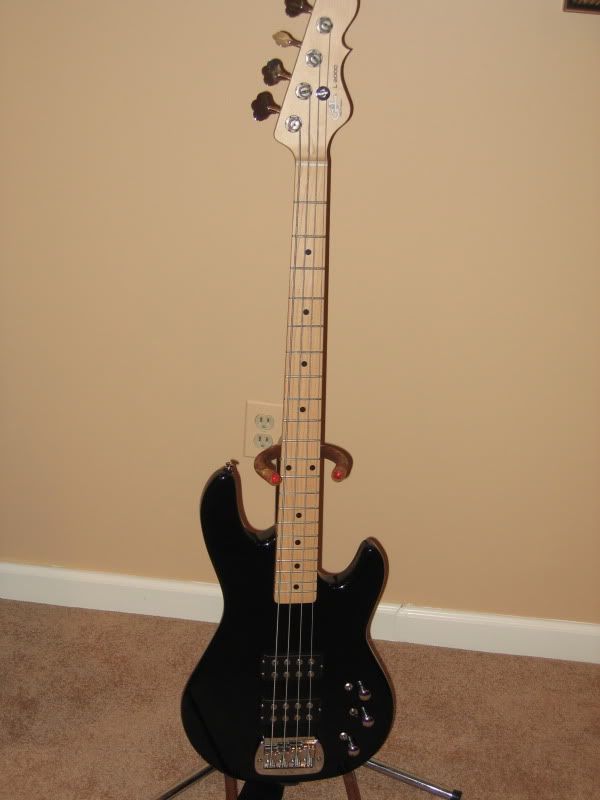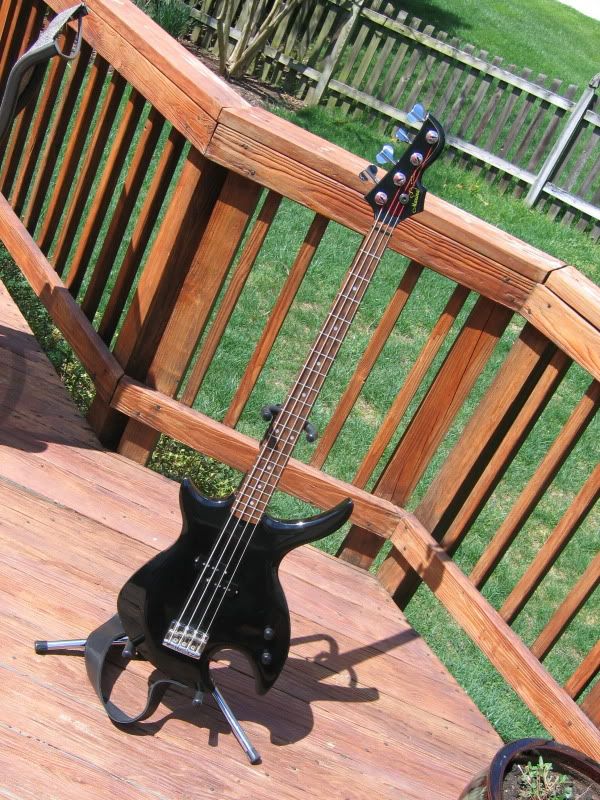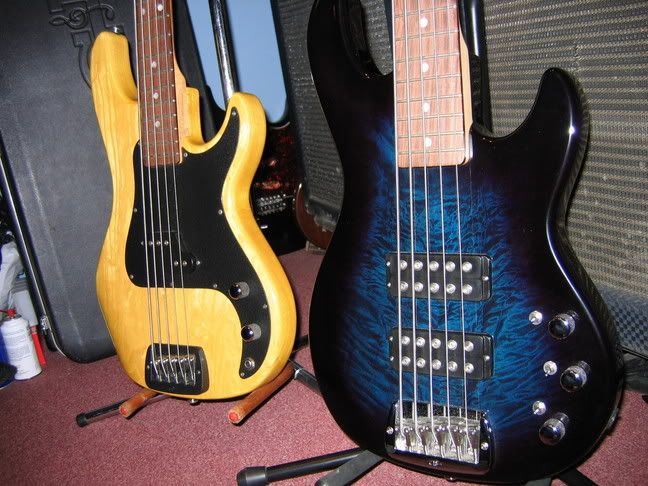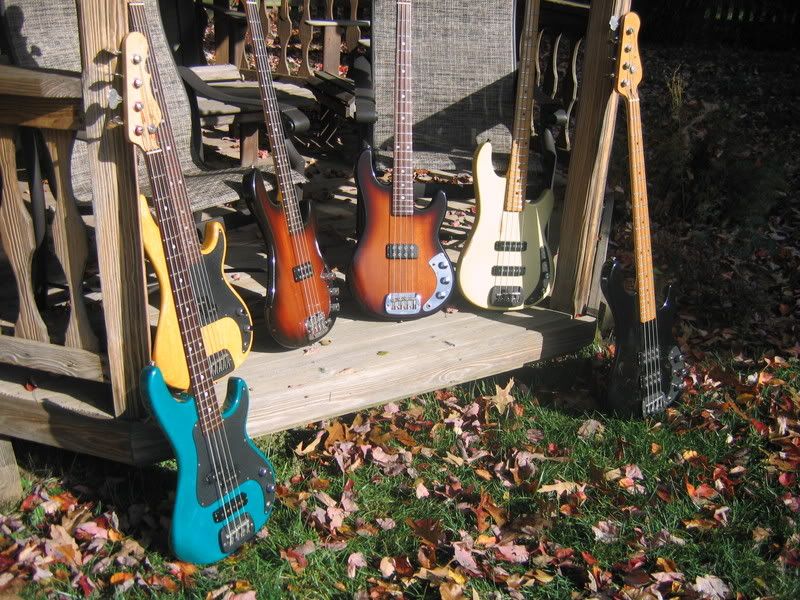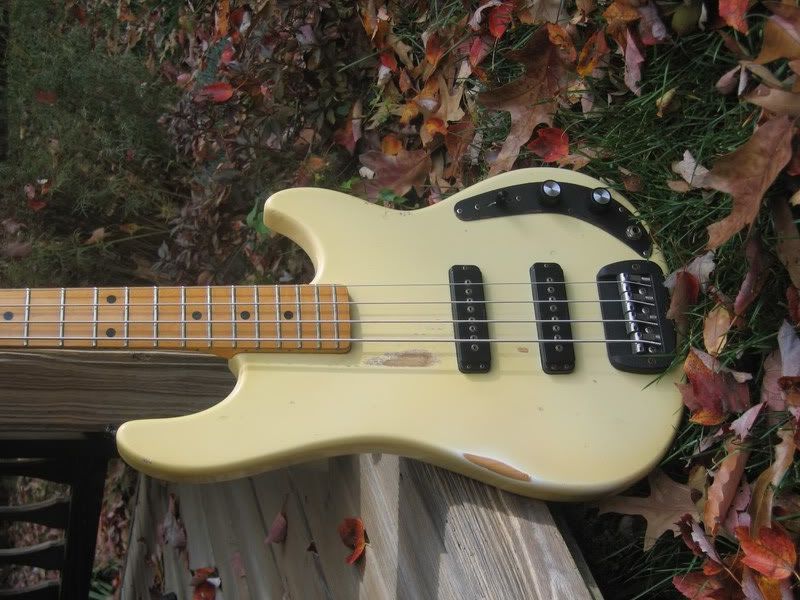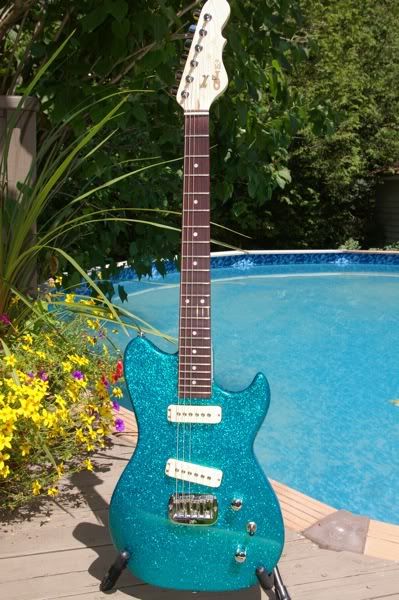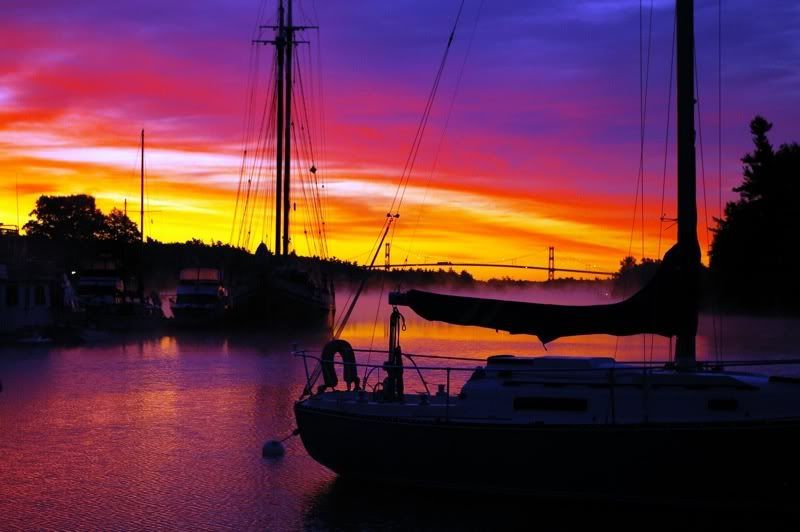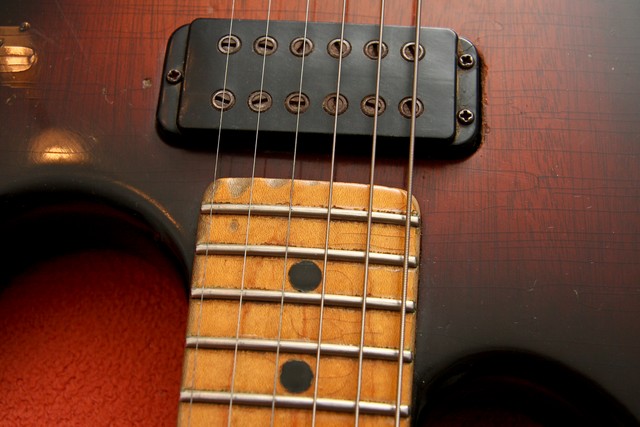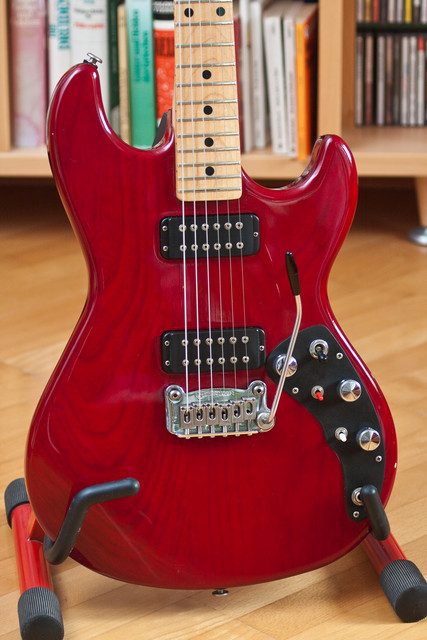Lunch will be something on the road. Where or when is to be determined.
Some of the oldtimers around here might remember Griff. He would take beautiful photos of his vintage G&L collection in all sorts of natural surroundings near his home in SW British Columbia, Canada. For him, it wasn't so much about equipment (though his was very good); it was all about composition and focus. Imagine an old F100 (as I recall) at the foot of a tree with crimson leaves scattered on the body. Some of his guitars were in less than pristine condition, yet they looked immaculate in his photos.
In my dreams I could do that sort of thing. A visual artist I ain't.
But I have learned a thing or two. Here are some of them.
Be aware of the background. You probably don't want it to look ratty. Put the kids to work seeing how many trash cans they can fill up.

Watch out for reflections. Or for God's sake, at least wear clothes. And keep your feet out of the image, especially if they have Crocs on.

Casting a giant shadow isn't necessarily a good thing. Unless you're Chong Wang. Maybe even then.

If your camera is on a tripod, make sure its wrist strap is where you want it to be. Like out of the way.

And cel phone images can be really bad. Easily. There was some character a couple years ago trying to sell a guitar or bass or something on Craigslist. Now, CL photos are small and it takes a bit of attention to make it look like you're actually trying to sell your item. Not this guy. Nope. I swear on a stack of bibles that his photos were backlit by the sun on a bright day and the phone's lens had greasy nose prints. It was like looking through fog. Just…. Don't. Damn!
But seriously…
Whenever possible, take your photos with your camera mounted on a tripod or other support. Unless the lighting is optimal, it's likely that the automatic settings of your camera will make it possible for camera movement to make for a blurry image. Image stabilization is nice, but a tripod can hold the camera a bunch steadier than most people can and allow you to turn IS off. You can spend a little or a lot, but $50 to $70 seems to bring some nice lightweight tripods.
If you know you're shooting in reduced light you can help yourself even more by taking your trigger finger out of the equation. Learn to use the timer feature that most cameras have. Turn the timer on, press the shutter halfway and allow the camera to focus, then press the rest of the way. 10 seconds later the camera fires. Some cameras can take multiple images on one firing, others can auto-bracket.
A camera-mounted flash can make things look really washed out and can cause some weird looking shadows. Accessory bounce flashes can help here, but the average snapshot camera can't use these without the proper slave and they need a ceiling to bounce off of.
This image was taken in hazy sunlight (which actually ain't bad for a photo), but I forced the flash on. Range to the bass was about 7 feet. You can see the flash's shadow on the wall to the right of the headstock.

Same as the above, with the flash off.

My camera does have a fast lens (f=2.0) which makes no flash images a lot easier. But slower lenses can do nearly as well with a little thought and a tripod.
=======================
For many compact snapshot style cameras, it’s a good idea to try to set your camera's image size with the target audience in mind so that you can avoid big jumps in resizing. Resizing a JPG image will many times leave you with jaggies or other sorts of artifacts that detract from the image. More mega pixels doesn't necessarily help here, though good onboard image processing does help. You can sometimes get an idea of what you can get away with by viewing an image from your camera and zooming in to or out of it. The practical limit is reached when the image quality starts to deteriorate. Take lots of pictures, play and learn.
To back up just a little bit… JPG images are compressed representations of the original image using "lossy" compression; kind of like MP3 audio vs uncompressed WAV. The camera will optimize the compression for the desired image size (in pixels). Some cameras use more compression, others less. Less is better because the images can be altered a little without looking like they've been altered. Editing a highly compressed image can leave you with a visual disaster.
A camera that can take RAW images is an asset. These are uncompressed images and can allow a great deal more flexibility when manipulating them. RAW is a generic term used to refer to a proprietary image format used by the camera; there is no standard. For example, Canon's RAW and Nikon's RAW are different. Manufacturer-provided software is used to convert these to uncompressed image formats that are not proprietary, such as TIFF. (Some image editing applications can work with various manufacturer's RAWs, but YMMV.) With an uncompressed source image, you can zoom in, out, resize, alter, adjust, etc; all with very little degradation. The downside here is that cameras with RAW capability can be spendy.
Here is a closeup of the L-2500 headstock. Like all the images above, it is resized from a 2736 x 3648 RAW to 600 x 800.

Here's the D string post cropped in and at its native resolution.

I've purposely taken some pretty crappy and goofy pictures for this, though I really couldn't replicate re-sizing issues because I ran out of time. But I damn near wore black socks under the Crocs just for you guys. Then I thought better of it.
This certainly isn't the last word on this stuff, and I really would like to hear about some of the methods and tactics you guys use when photographing your collections. A lot of your work is pretty stellar.
